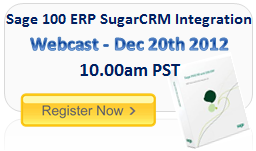Sage Software Reviews
Sage Software Reviews - Have you outgrown your Sage accounting system? For many years, Sage has provided tens of thousands of organizations with...
If content is King — then connected content is Emperor.
The convenience of SaaS
It sounds good doesn’t it? You can find a business application on the web, try it free for 30 days, and subscribe to it if you like it. When you no longer need the service, simply unsubscribe.
What’s more, you can do this as an OPEX item — and you don’t even have to go near the business prevention team called “The IT Department”.
Before you know it, you have filled a lot of “gaps” in your business automation using a variety of SaaS applications including time and billing, payroll, contact management, invoice delivery, accounts payable processing, and human resources. You can access these applications at any time and from any place — including through your smart phone. You believe that somewhere out there is a SaaS application that solves any problem you come across. So far you have been right. Even better — you can manage all of these subscriptions through a single portal provided by your mobile network operator — and they appear on a single invoice on your phone bill. Through volume purchasing, the mobile network operator can even offer you better subscription rates than if you went directly to each SaaS application provider.
Sounds great? Well actually it’s not.
The inconvenience of SaaS
You have created several silos of disconnected but related business information. You have several records for the same customer in different databases — containing overlapping, unsynchronized, and duplicate data. You somehow need to tie together all these applications you have subscribed to — as well as the Sage accounting software that you were already using.
You call in your friends in the IT Department and beg forgiveness. You ask them to fix the problem in a good way, so that all seven applications are fully connected as though part of the same system once and for all. You soon realize that this is not easy, and it is expensive — as your IT Department points out that to tie every one of your applications to every other one requires 21 different connections to be built (that is n*(n-1)/2), where n is the number of applications to be integrated). They also explain that if you add one more application to your portfolio, then you potentially have another seven connections to be built — and so on.
You can’t afford the time, effort, and money to do this. You soon realize that if content is King — then connected content is Emperor.
A rising Star of the East?
At this year’s Sage Summit, I had the pleasure to meet with Hugh Johnson of Suntico, who were previewing their new Suntico Platform that solves this problem. According to Hugh, “The Suntico Platform is the easiest way for Sage business partners to deliver connected services to their clients. Unlike any other system, there is no need to understand or define common data exchange standards between applications and services — making connection simple”. Suntico are based in Dublin, Ireland, and will be launching the Suntico Platform initially for the Sage small business community.
Here is what Hugh had to say:
Sage Software Reviews - Have you outgrown your Sage accounting system? For many years, Sage has provided tens of thousands of organizations with...

SugarCRM vs. Sage CRM